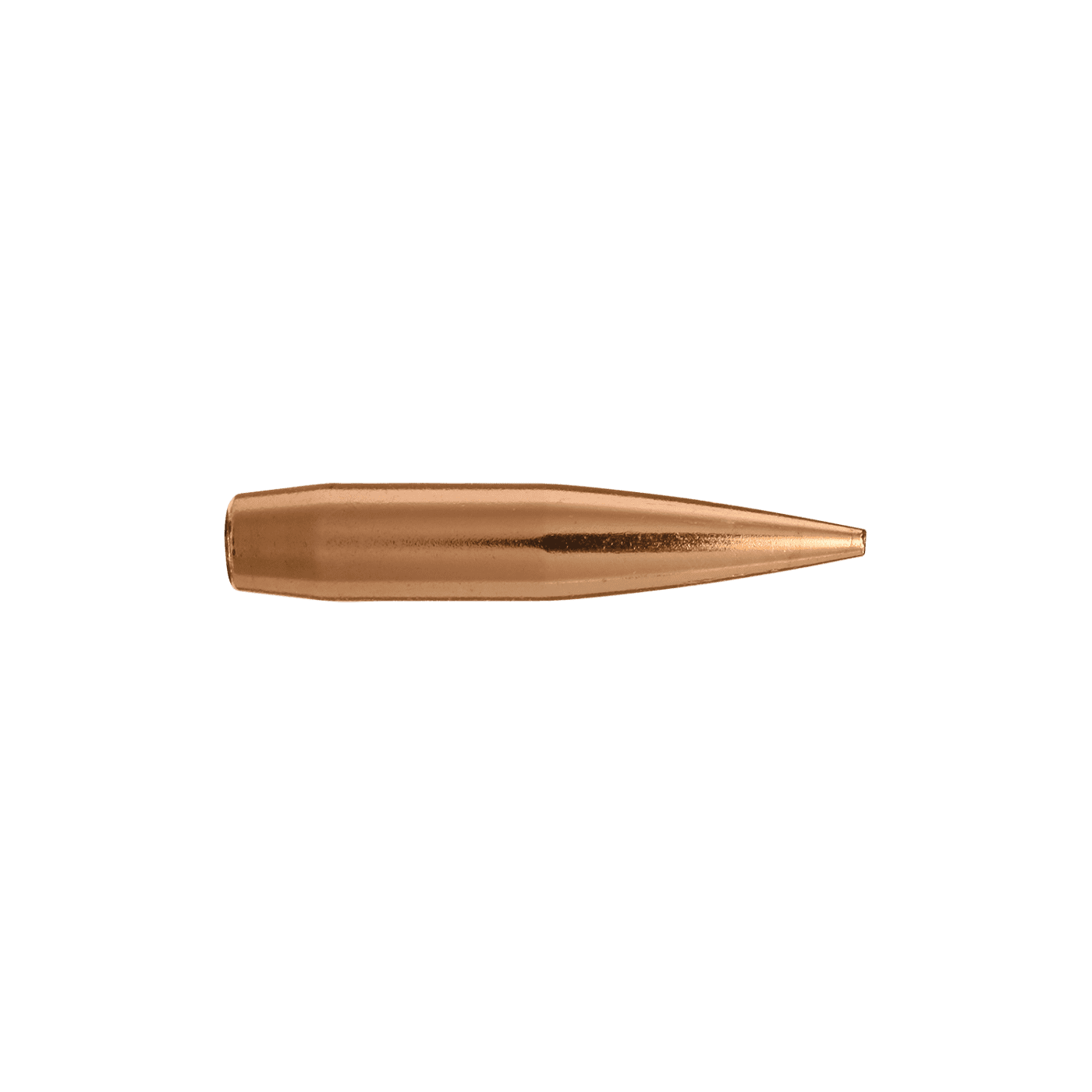So I finally got to dissecting a Berger Hybrid not too long ago. What I found confirms my long suspicion as well as others I've talked to about them and their performance. There's an enormous cavity below the open tip and before the core. Not all OTM style bullets are like this, at least not to this degree. The jacket thickness is also a very uniform .026" from the base to the ogive.
What's most interesting is that this jacket has what I'm referring to as ribbing in the ogive. This is something similar to what I've seen with some solid copper bullets as a way to weaken the ogive to help produce better expansion, but not something I've seen with any of the many other lead core bullets I've dissected- not like this anyways. My theory is that Berger did this with the hybrid as a method to keep the ogive shape consistent to not only achieve the hybrid shape, but to ensure each bullet is consistent to one another during the swaging process. Also, these are indeed solid ribs that are engineered into the jackets and not caused from the metal folding in on itself from being shaped down into the ogive profile. That does occur sometimes, which I've seen, but not like this. It's unfortunately really hard to see them clearly in the pictures.
I also theorize that this helps balance expansion and penetration but doesn't compromise it like with the thick ogives on the post 2011 VLDs.
Up until now, I've felt comfortable, after seeing tons of success stories with this bullet, recommending it not only as a good option for hunting in general, but at impact velocities down to at least 1600fps. I wanted to wait to dissect it before making a more confident recommendation. After finally seeing exactly how it's constructed and the jacket thickness, I'm confident it'll be reliable to at least 1400fps, and perhaps even a bit lower with sufficient impact resistance (keyword there being sufficient). Keeping it above 1600fps though is definitely still a faster bet regardless.
Also, Berger has been clever with their marketing, like pretty much all manufacturers. The Elites, EOL, Classic hunter hybrid, hybrid target OTM, Juggernaut, etc, etc are all hybrid designs and they all have the same jackets and cores. They only differ slightly in profiles which just changes the BC a bit. Some are also pointed from the factory to close the tip a bit more and boost BC just a bit more.
Terminally, they all pretty much behave exactly the same. For all intents and purposes, a Berger Hybrid is a Berger Hybrid as far as terminal performance hunting is concerned. They SHOULD be good down to 1400fps with adequate impact resistance and the pointed ones down to 1600fps. Both styles will be good from those minimums to at least 2600fps before you'd ideally want to avoid the higher impact velocity shots like shoulders. Aim more behind the shoulder if possible if you'll be impacting above 2600fps. If you run a version with a sectional density of at least .280 and over, you can even be fine impacting well above 2600fps, but I'd still avoid shoulders.
So if anyone was still on the fence with this bullet, hopefully this boosts your confidence.
And yo clarify, this is not the same as any of the Berger VLD style bullets. I personally am not a fan of the VLDs. Berger had issues with their VLDs experiencing blowing up in flight prior to about 2011. That's around when it got extremely popular to run heavy for caliber high BC bullets and at very high velocities. Faster twist rates were needed to stabilize those longer bullets. The faster twist rate, higher velocities, and longer barrels used increased friction in the bore to the point the heat was transferring through the jackets and melting the cores, catering the bullets to blow up not far from exiting the barrel. Berger subsequently thickened the jackets to keep the heat from getting to the cores. Unfortunately, this process caused the jackets to actually thicker at the ogives during the core drawing process, and it created less reliable expansion. The Berger VLDs are much different in that regard to the newer hybrid ogive versions. I'm not a huge Berger guy, honestly, but their Hybrids are a much better and more consistent design. Below are some examples of post 2011 Berger VLDs and a Berger Hybrid I cross-sectioned. You can see how thick the jackets are at the tip of the VLDs. There's also a Hammer, Sierra Tipped GameKing, Hornady AMAX, and Hornady A-tip in a couple pics. The picture with two just jackets on their sides (last pic) are both VLDs and you can see how they're thicker near the tip. I have more stuff like this in other posts as well.
View attachment 309011View attachment 309012View attachment 309013View attachment 309014View attachment 309015View attachment 309016View attachment 309017View attachment 309018

